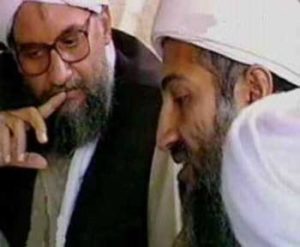The weekend before last I had the pleasure of attending a fascinating workshop in Oslo that brought together scholars from Sciences-Po Paris, West Point and FFI, three of the world’s largest centres for academic research on jihadism. Since all participants are involved in cutting-edge research, it was a great opportunity to assess the state of both the jihadi movement and the field of jihadism studies. I guess the conclusion was that we are both doing pretty well, although the future looks somewhat bleaker for the jihadis.
The opening panel featured the three “bosses” Gilles Kepel, Reid Sawyer and Brynjar Lia. Kepel, drawing on his latest book, spoke about the exhaustion of the two competing grand narratives in the conflict between the US and al-Qaida, namely the “War on terror” narrative and the “Jihad and martyrdom narrative”. Kepel argued al-Qaida’s narrative had lost much of its capacity of attraction and that the more pragmatic resistance movements such as Hamas now offered a strong alternative model to al-Qaida. He aso contended that decentralization had weakened al-Qaida and that Abu Musab al-Suri’s doctrines had been a recipe for disaster. CTC director Reid Sawyer presented an analytical framework developed by the CTC for assessing the state of al-Qaida (see the related Sentinel article). It identifies five dimensions of al-Qaida’s power, namely the power to destroy, humiliate, inspire, command, and unify. Sawyer argued that al-Qaida’s power was reduced in several of these dimensions, especially in the power to humiliate, but not in the power to inspire. Interestingly, Sawyer and Kepel offered different assessments of the impact of jihadi recantations; Kepel argued Dr. Fadl’s critique had been devastating, while Sawyer saw the latter’s impact as questionable. Brynjar Lia, drawing on an earlier paper, reflected on the reasons for al-Qaida’s continued appeal. Key to al-Qaida’s success, he argued, was the simplicity of its pan-Islamist message – he thus differed somewhat from Sawyer, who emphasized the sophisticated and complicated nature of al-Qaida’s information strategy.
The second panel focused on Afghanistan and Pakistan and opened with a fascinating paper by Mariam Abou Zahab on sectarianism in the NWFP and the tribal areas. I had always associated sectarianism primarily with the Punjab, but Abou Zahab showed it is increasingly destabilising the Northwest. By the way Mariam is speaking on the same topic at a Jamestown conference in DC on 15 April in case you want to hear more. CTC’s Vahid Brown spoke about his new research project on the history of the Arab camp infrastructure in Afghanistan, a topic close to my heart. He explained how camps filled a triple function in AQ’s pre 9/11 strategy: globalization (of operational reach), aggregation (of jihadi groups) and mobilization (of new activists). After 9/11, AQ abandoned the camp-based strategy in favour of a media strategy (as previously argued here). Brown made the counterintuitive argument that AQ had become more centralised after 9/11, because it had never actually exercised strict control of the camps and its post 9/11 media strategy was much more coordinated than before. FFI’s Anne Stenersen presented a very interesting study of the foreign fighters in post 9/11 “AfPak” based on martyrdom biographies. Of the people in her sample, none were from the West, 70% were already in Afghanistan on 9/11, and most were involved in conventional guerrilla warfare (only 11% had participated in suicide attacks). She argued there had been relatively little new recruitment and that there were not many fighters left today.
In the third panel there were several great papers on the Levant and Iraq, including one by Truls Tønnessen on the early history of the Sunni insurgency in Iraq. Focusing on the now defunct group “al-Jama`a al-Salafiyya al-Mujahida fi al-Iraq” (see also here), he explained how Sunni religious clerics and pre-invasion salafi networks were crucial to the early mobilisation. He also showed how nearly all the smaller groups from 2003 gradually coalesced into larger organisations, usually along ideological lines.
To be continued.





2 Responses
Thanks for the review of the panels. Will those papers discussed be released for public consumption?
I believe FFI will publish a report with longer summaries of all the papers. It will probably appear in a couple of months’ time.